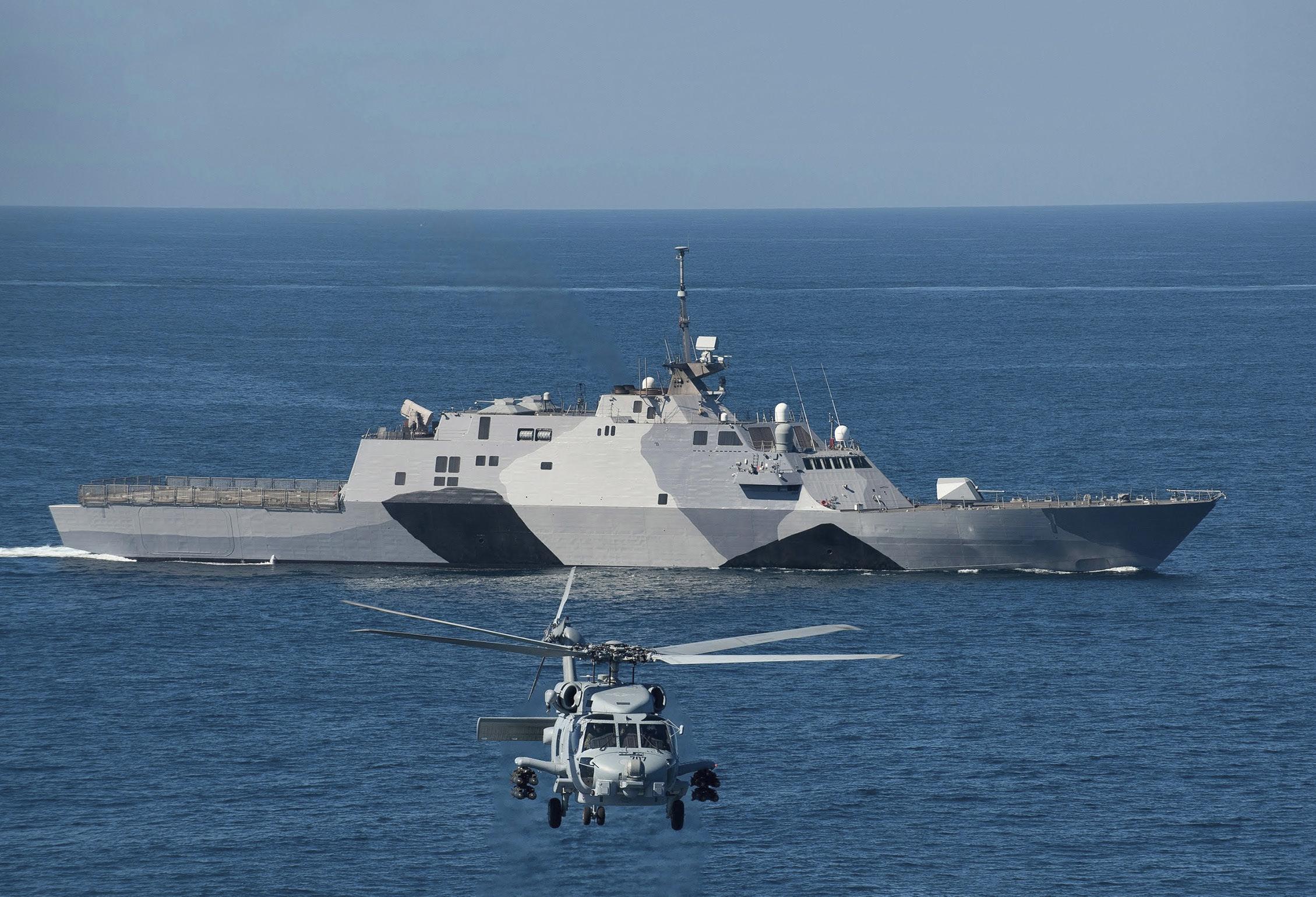
4 minute read
EABO and You: Seahawks, Marines, and the Familiar Future of Expeditionary Warfare - LT Cory R. Poudrier, USN
EABO and You: Seahawks, Marines, and the Familiar Future of Expeditionary Warfare
By LT Cory R. Poudrier, USN
Advertisement
The MH-60R settled into darkness on its final landing of the night. As the crew went through the newly familiar confined area landing (CAL) calls, it weighed on their minds just how dark the jungle really was. They’d been flying these night sorties for 4 days now, hopping from one hand-cut LZ to another, greeted by the same team of Marines who had been supporting these ops for months. They were far from their forward arming and refueling point (FARP), but with the new fuel bags and sheer manpower, the combined Navy/USMC support element had been keeping them resupplied with food, shelter, fuel, and sonobuoys without fail every night. As the crew sat with their Marine comms team uploading their post flight data, it started to really feel like deployment. Settling into their cots, "alone and unafraid" suddenly didn’t feel so alone.
Integrating for Success
In the last few years, the Chief of Naval Operations (CNO) and the Commandant of the Marine Corps (CMC) and his staff have published a number of interesting concepts. Beginning with “Littoral Operations in a Contested Environment,” (LOCE), there has been a call for creativity to tackle unique problems in the 7th Fleet Area of Responsibility (AOR): how can the Navy and Marine Corps redesign the way we integrate at sea to achieve sea denial from the littorals? From this charge came Expeditionary Advanced Base Operations (EABO). While EABO may seem like another new buzzword, the rotary wing community is in a unique position to collaborate with the Marines while they develop their new tactics, techniques, and procedures, (TTPs) in this effort. EABO concepts of operations (CONOPS) are in their infancy, and HSM and HSC have an opportunity to demonstrate our expeditionary and integrated expertise.
What do Sierras and Romeos bring to the fight? The same things we bring to the Air Wing. The persistent surveillance and ASW presence of the MH-60R, combined with the combat SOF insertion and logistics capabilities of the MH-60S, provide the EABO with organic intelligence, surveillance, reconnaissance (ISR), ASW, Command and Control (C2), and self-support. With the aid of USMC ground teams, already proficient in operating in austere, hostile environments, the MH-60R/S Team provides battlespace awareness that is agile, low profile, and low cost. While CMC’s discussion on EABO focuses on establishing FARPs with runways, primarily to refuel and rearm F-35 or P-8s, utilizing MH-60R as a sensor platform reduces fuel requirements, ground support requirements, and eliminates the need for a runway. H-60 Teams simply need a clearing. MH-60S can provide movement and logistics to SOF and USMC ground support elements in seizing and establishing new landing zones. Once established, USMC ground support, already familiar with calling for fires overland, can utilize MH60R sensor cueing to direct their HIMARS and other assets in support of the high-end maritime fight. The MH-60R, supported by MH-60S and USMC logistics, can maintain a mission agile forward position that can plug into the theatre ASW and EW picture as well.
The Path
The Technical Manual (TM) EABO, released in February of 2021, outlines the structure and the USMC concepts of interest. This document outlines in Appendix B the mission essential tasks that USMC headquarters sees as important. These tasks are places where we can collaborate to bolster each other’s capabilities, but defining the details of these tasks will take experimentation and development. As new exercises test the waters of FARP and EABO operations, operators and planners are identifying new operational and doctrinal hurdles to integration. USMC policies for ordnance handling are very different from USN policies, for example. Are there ways to change our instructions to allow for those differences? How will Navy rotary wing assets plug into FARP fueling equipment? How do EABO assets see and update the COP? Who has the authority to make these things happen? It is important in our efforts to integrate that we remain flexible and creative; there is not likely one solution to these problems, and it will take creative minds to find the ones that work.
Current Efforts
The USMC and USN are testing elements of this concept every day. CHSMWP is embarking detachments on the Amphibious Ready Group (ARG), building relationships with the Marine Expeditionary Unit (MEU) and finding ways to collaborate on strike group level problems. The “Fury” series of exercises conducted by 3rd MAW are testing our contracts between Marine Air units and controllers, highlighting the need to know each other’s publications as well as our own. USMC units are leaving the desert where they’ve spent the last two decades training and fighting in order to establish FARPs on islands off Southern California, HSMWSP is exploring iterative plans to incorporate USMC fires, communications, and logistics support into the Helicopter Advanced Readiness Program (HARP). All of these efforts and more are building proficiency and greasing the skids for the big picture problems to come.
Will We Be Ready?
In order to meet this challenging problem head on, we will need creative, aggressive leaders who are willing to try new things in support of atypical operations. Have no fear: this is part of the process. Working together to understand organizational differences and cultural norms are part of what makes joint efforts difficult, but we have much to learn from each other. This concept will ask us to perform at our best, allowing us to illustrate the professionalism and flexibility that CVW, DESRON, and Fleet Forces have come to expect. We must continue to push into events supporting this mission set, and look for every possible excuse to integrate and dominate in the high level maritime battlespace.










